One of the most irritating things in summer is sitting at work when the weather outside is beautiful, so much encouraging to go on the road by motorcycle… But in the afternoon you can always have a quick trip around the area where you live. Probably each of us knows a few places that are worth showing someone, and the route does not take more than a few hours. This time we decided to follow the Eagles’ Nests Trail on a motorcycle.
Eagles’ Nests Trail on a motorcycle
4 p.m. is not the best time to go anywhere. After a while, we left behind us a corked as always at this time Katowice, and we headed off from the national 94 to the less frequented, but very picturesque, provincial route 790. Just outside the village Niegowonice the road to Ogrodzieniec leads through Kromołowiec Hill, creating here great serpentines reminiscent of mountain trails. It is worth stopping here for a moment, from the top of the peak stretches a beautiful view of the surrounding area. In good weather, you can see the Błędowska Desert, Rabsztyn and Ogrodzieniec, which was our next stop.

Ogrodzieniec Castle – like the little Wawel Castle
The Ogrodzieniecki Castle, built during the reign of King Casimir III of Poland, is the largest and most famous castle building in Silesia, as well as the most popular of all the castles of Eagles’ Nests. A real gem in the crown. The view of the structure, built in the 14th century, is still breathtaking. During the Bonner family rule, the castle was in its prime. Seweryn Bonner and his wife Zofia Bethman, after merging their estates, decided to rebuild the castle in Ogrodzieniec to make it more cosy. It was supposed to be a new home for them, so the young spouses demolished the old heavy Gothic walls and turned the gloomy fortress into a magnificent Renaissance residence.
It was called the “little Wawel Castle”. Filled up with beautiful tapestries, mahogany and ebony furniture, it was only in size that it gave way to the royal residence. The Bonner’s equipped him with the most valuable objects imported from abroad. Later owners extended the castle with a western wing, called Kurza Stopa, and a bastion – a beluard. It was the second such building in Poland. Unfortunately, all that is good ends quickly. In 1587 the building was captured by Maximilian Habsburg, who was withdrawing from Krakow. It was a success for him, after the defeat at Wawel Castle. Later, the forgotten one was revived during the reign of Jan Firlej, who changed its interior to Baroque. Destroyed and plundered twice by the Swedes, he witnessed the times of Poland’s splendor and downfall. The most beautiful of the Eagles’ Nests, forgotten and destroyed, waited for better times.
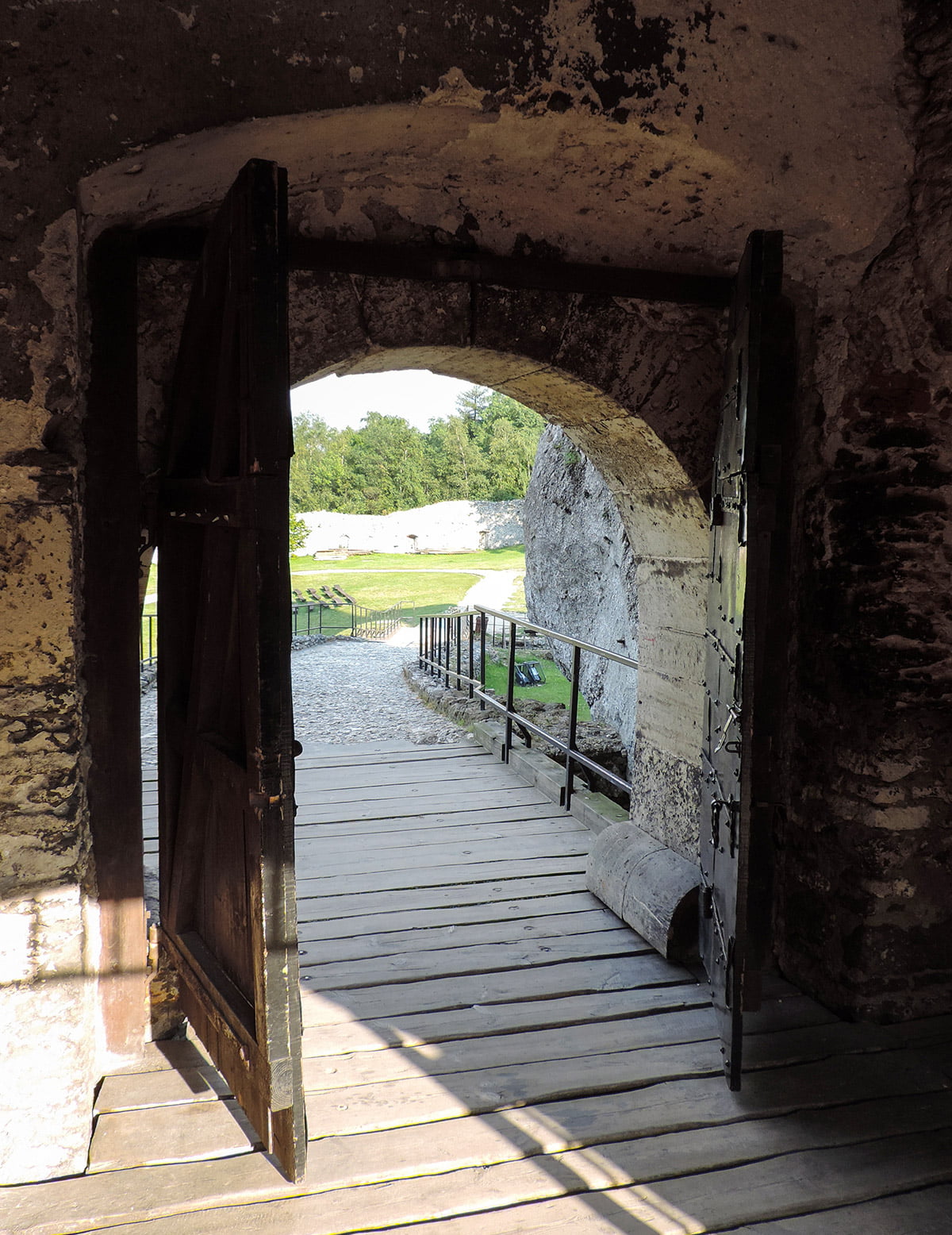
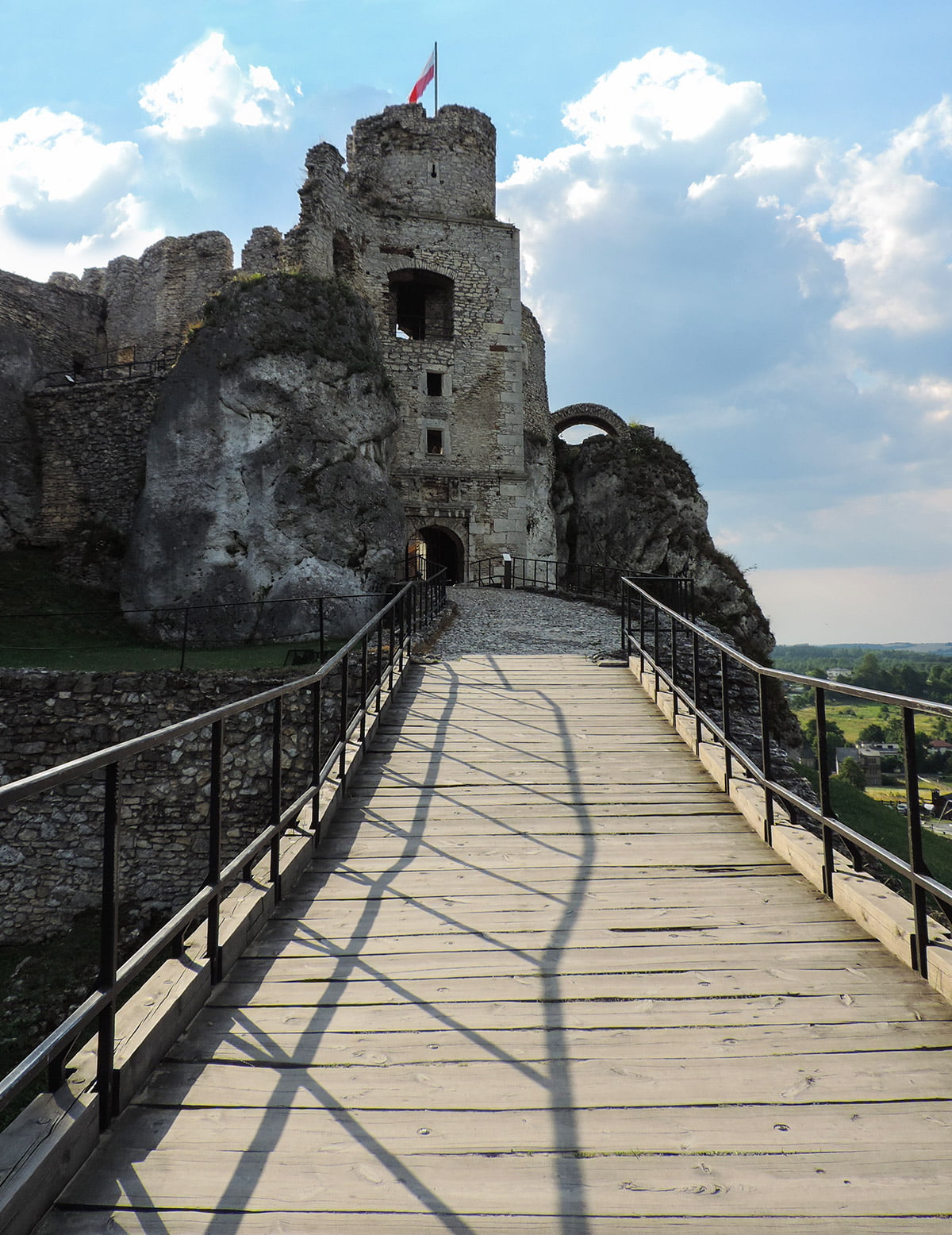
The castle in Ogrodzieniec – on a movie set
The castle was often appreciated by scriptwriters as beautiful and picturesque ruins. In 1973 it was used as a part of open-air film screenings for the polish TV-series “Janosik” and the adaptation of Alexander Fredro’s “Revenge”. In 1906, Aleksander Janowski founded the Polish Sightseeing Society, inspired by the view of the fortress, which also became a symbol of the organization that still exists today under the name of Polish Tourist and Sightseeing Society.
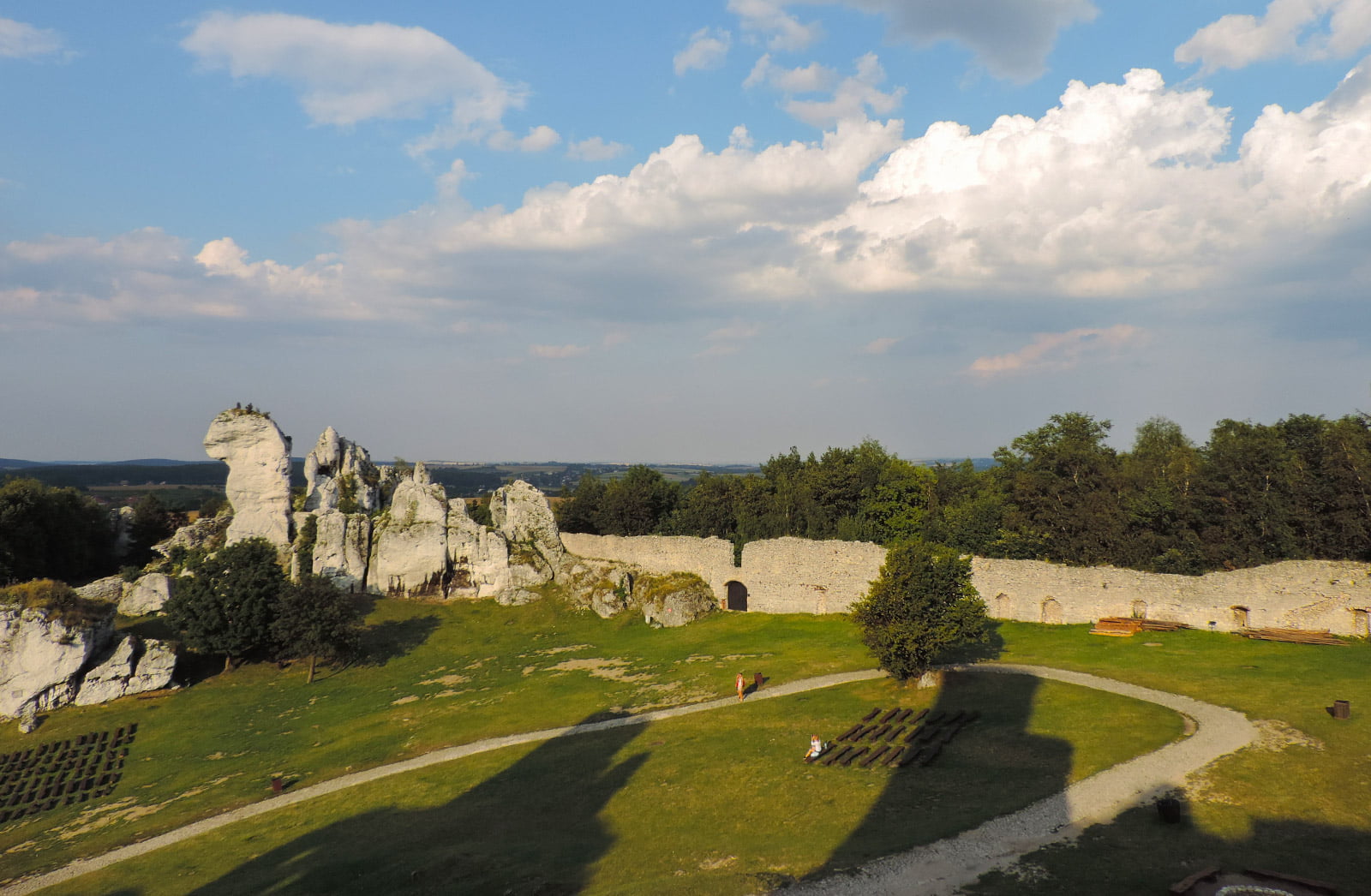
Legends are also connected with the old medieval walls. The most famous is the Black Dog. It appears sometimes at night, running around the walls and around the ruins of the castle, pulling a heavy chain behind it. It is said to be the soul of the castellan of Krakow Stanisław Warszycki, also known as “the Devil”. Interestingly, the castellan scares not only in Ogrodzieniec but also near the ruins of Danków Castle but as a headless rider.
The legend of the devil and the black dog that lived in the Ogrodzieniec Castle
“Stanisław Warszycki was a wealthy man, but of a bad character. He was harsh and merciless both for the service and for his subsequent wives. It is said that he bricked up one of them for infidelity, and flogged another one in public. Until… he met his Helena and became a hen-pecked husband. However, in old age what was bad came back. Having promised his daughter Barbara a part of his huge estate as a dowry, he gave her nothing. Because he was greedy, it is said that to this day he is still guarding his treasures, which nobody has found so far. During the moonlit nights, he appears in the form of a black dog, tied with a buzzing chain, guarding access to his valuables.
Smolen Castle, a tale about three Tatars and hidden treasures
The next stop is Smoleń Castle, less than 13 kilometres away. The building is heavily ruined but has its own charm and stands on a high hill overgrown with forest. Unfortunately, the entrance to the area is possible until 6 p.m., we appeared there over an hour later, but still it was worthwhile to drive there to walk around the ruins admiring the castle and its surroundings. The fortress, whose ruins we can still see today, was erected in the Gothic style in the mid-14th century, most probably by Otto of Pilcza and replaced the existing here, perhaps earlier, wooden watchtower. It was destroyed during the Swedish invasion and the demolition were completed by Austrians who in 1797 used stone from the walls to build a customs chamber in Smolen. Afterward, the building was only cleaned up and secured as a permanent ruin.
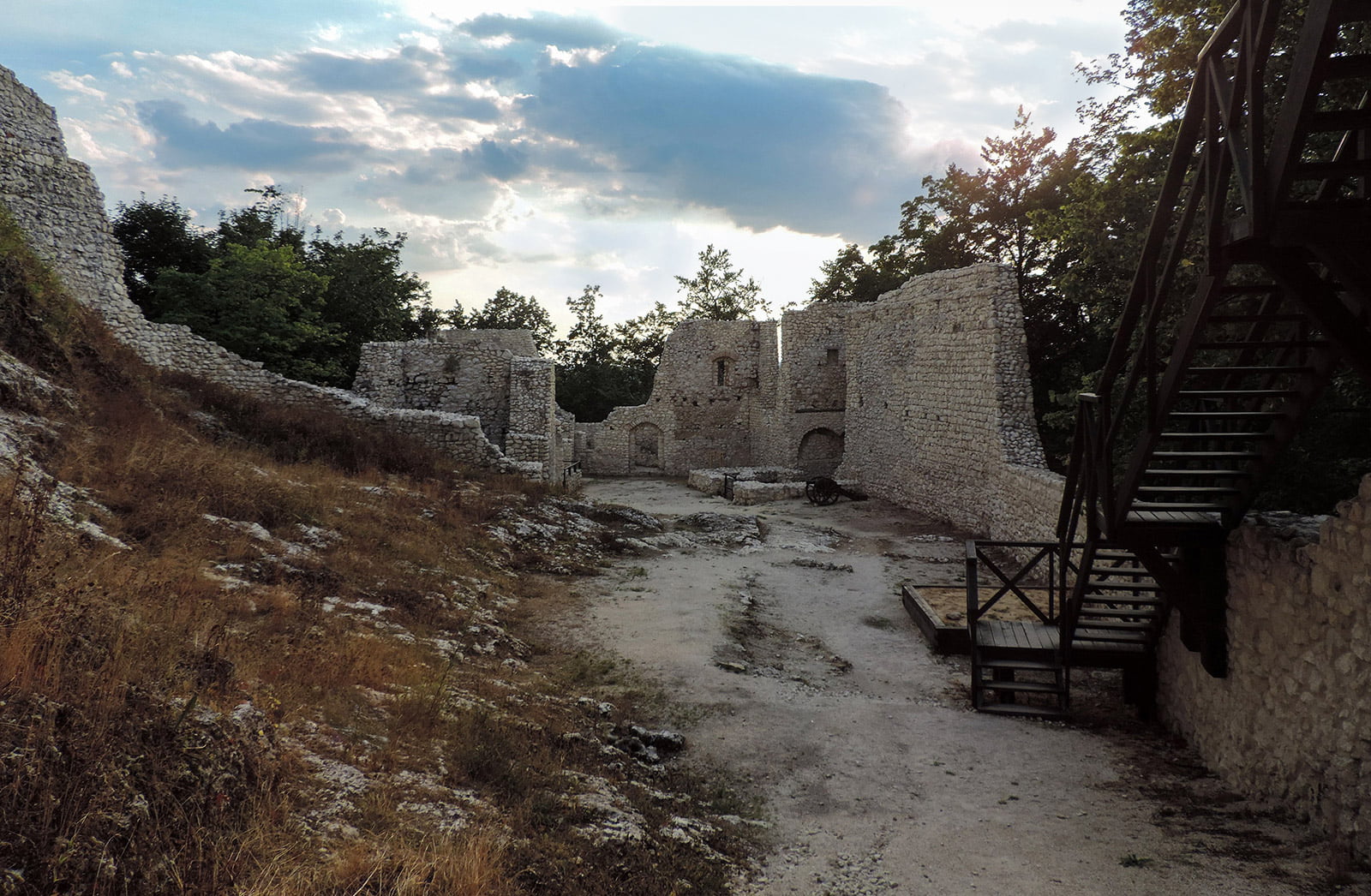
Like any other castle in Poland, Smolen Castle also has its own dark legend. This legend tells about the captured Tatars, who were supposed to dig a deep well. It is believed that at the bottom of the well there is a network of caves that connect with each other through corridors. There are about 50 of them in total. It is said that during digging, the Tatars found their way to the side corridor, where great treasures were hidden. Few knew about it, and those who could not keep a secret, ended up at the bottom of the well next to the treasures to protect them till the end of their days.
Bydlin’s Castle – the property of the illegitimate son of Casimir III of Poland?
At the end of our short trip, we visited the ruins of a knight’s castle in Bydlin, also belonging to the complex of Eagles’ Nests Trail. Supposedly, its first owner was the illegitimate son of King Casimir III of Poland. What was the truth, only the walls of this destroyed fortress know. At the beginning of the 16th century, the defensive castle was rebuilt into a church, although some scholars believe that this small building had no defensive function at all, but had always been a sacred place. In 1655 the church was destroyed by the Swedish forces going to Częstochowa. A few decades later it was rebuilt by the Męciński family. At the end of the 18th century, the castle was gradually abandoned and ruined. Nowadays, only the walls and piles of stones are left.
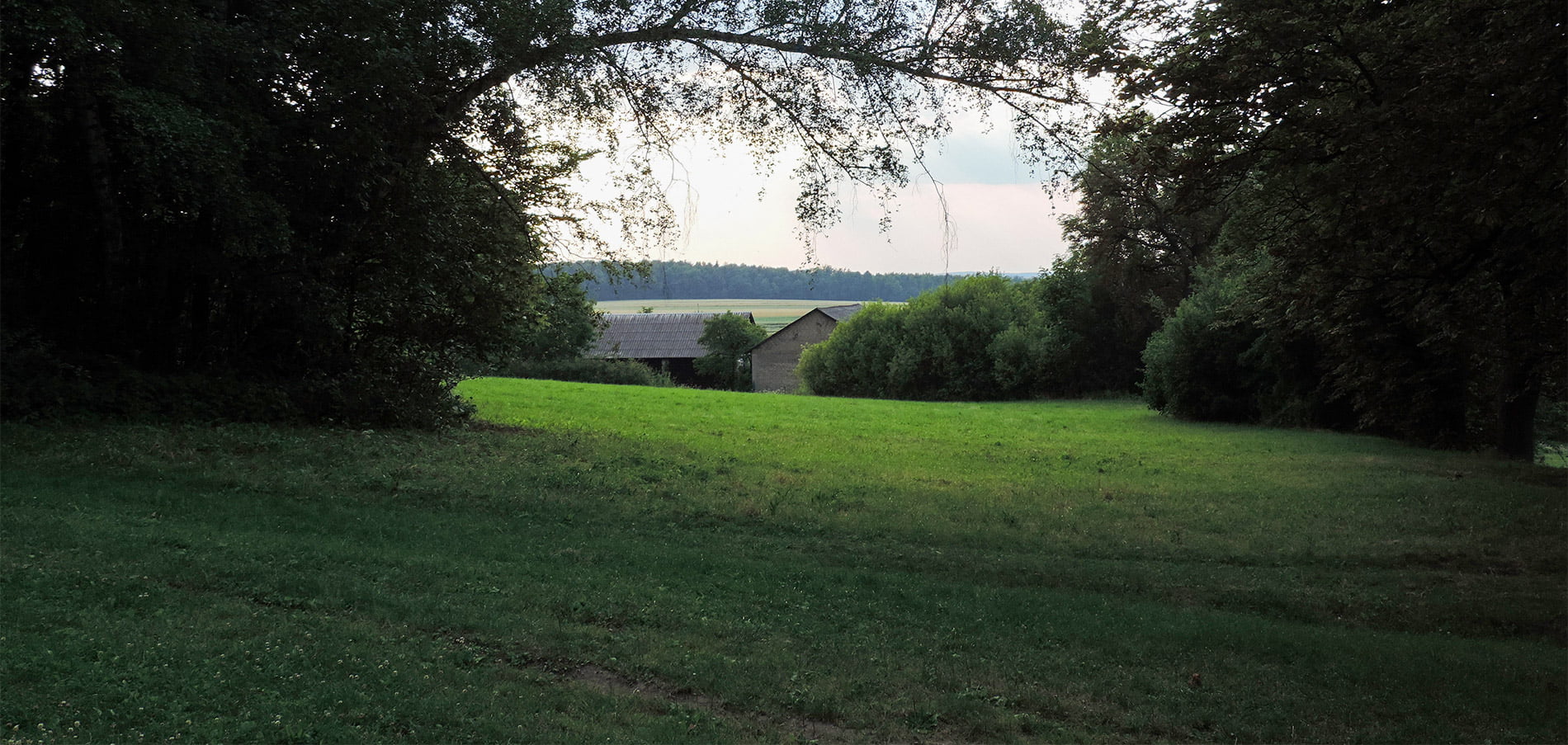
Did you enjoy our article about a trip along the Eagles’ Nests Trail? Be sure to check out our second post about it.
